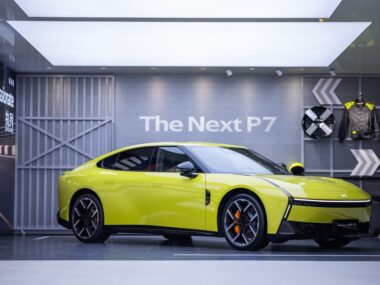Chinese electric vehicle manufacturer Xpeng has sent shockwaves through the automotive industry with the launch of its sleek P7 sports sedan at a price point far below market expectations. Starting at just A$47,000, the P7 is positioned to become a major disruptor in the competitive electric sedan segment, challenging established players with its combination of premium features and aggressive pricing.
Key Highlights
- Starting Price: A$47,000, significantly undercutting initial estimates
- Market Position: Targets premium EV sedan segment with budget-friendly pricing
- Competitive Edge: Poses direct challenge to Tesla Model 3 and other mid-range EVs
- Strategic Move: Part of Xpeng's aggressive global expansion strategy
Xpeng's Market-Disrupting Pricing Strategy
The Xpeng P7's launch price represents one of the most aggressive moves in the electric vehicle market this year. Industry analysts had projected the sports sedan would debut closer to A$60,000 given its premium specifications and positioning. The A$47,000 starting price places the P7 squarely in competition with mainstream electric vehicles while offering features typically found in more expensive segments.
Technical Specifications and Performance
The P7 boasts impressive technical credentials that make its pricing particularly remarkable. The rear-wheel-drive model features a 263 horsepower electric motor capable of accelerating from 0-100 km/h in 6.7 seconds, with a top speed of 170 km/h. The battery options include a standard range version with approximately 480 km of range and a long-range variant offering up to 706 km on a single charge, based on NEDC testing standards.
| Specification | Standard Range | Long Range |
|---|---|---|
| Range (NEDC) | 480 km | 706 km |
| 0-100 km/h | 6.7 seconds | 4.3 seconds |
| Power Output | 263 hp | 430 hp |
| Fast Charging | 80% in 30 minutes (DC fast charging) | |
Competitive Landscape Implications
Xpeng's pricing strategy places immediate pressure on competitors in the electric sedan market. The P7 now undercuts the Tesla Model 3 by a significant margin while offering comparable range and performance metrics. This move could force other manufacturers to reconsider their pricing structures, particularly as Chinese EV makers continue to expand into global markets.
Premium Features at Mainstream Prices
Despite its competitive pricing, the P7 doesn't compromise on premium features. The sedan comes equipped with Xpeng's XPILOT advanced driver assistance system, a panoramic glass roof, and a sophisticated infotainment system with voice recognition. The interior features vegan leather upholstery and advanced noise cancellation technology, creating a luxury experience atypical in this price segment.
Global Expansion and Market Strategy
The aggressive pricing appears to be a calculated move as part of Xpeng's broader international expansion strategy. Having established a strong presence in China, the company is now targeting European and Asia-Pacific markets. The P7's competitive pricing serves as a powerful entry strategy to gain market share and establish brand recognition in new territories.
Charging Infrastructure and Support
Xpeng is supporting the P7 launch with investments in charging infrastructure and customer support. The company has announced partnerships with charging network providers in target markets and is offering competitive warranty packages, including an 8-year or 160,000 km battery warranty, addressing common consumer concerns about EV ownership.
Xpeng's unexpectedly aggressive pricing for the P7 sports sedan represents a watershed moment in the electric vehicle industry. By offering premium features and performance at mainstream prices, the Chinese automaker is not just launching another EV but fundamentally challenging the established pricing paradigms in the global automotive market. This move could accelerate EV adoption by making advanced electric technology accessible to a broader range of consumers while forcing competitors to innovate both in technology and pricing strategies. The P7's launch may well be remembered as the moment when premium electric vehicles became truly accessible to the mass market.


